3 Lenses for Developing Deeper Driving Questions
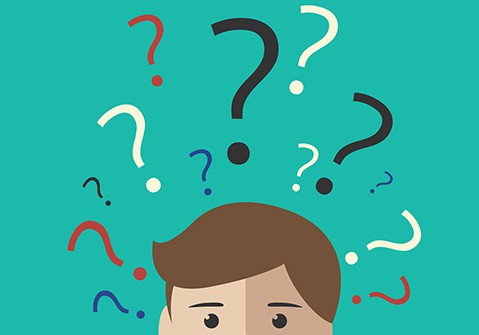
Aaaalllllll the way back at the beginning of my career, I learned a critical lesson about developing driving questions. Before I’d heard of “project-based learning,” I learned and practiced “inquiry-based science” – another style of student-driven, discovery-based learning. In my first learning sciences research position, I was working with the awesome David Kanter on a middle-grades human body unit. The lessons I learned working with him have pushed my teaching forward ever since.
One key lesson was around developing driving questions! David shared with me that the original driving question for the unit we were working on had been “How can I invent a functioning artificial heart?” – a very exciting and engaging question! But, as he started developing the learning arc, David found that the learning outcomes he was aiming for – body systems function and integration – weren’t needed to answer the question. It might be a great driving question for a fluid dynamics or materials science class, but not middle-grades life science.
When I came to work for David, the question had shifted to “How can I redesign my school lunch to meet my body’s needs?” THIS question clearly created a “need to know” for the specific learning outcomes David was aiming for, and his team (including me for several years) ultimately developed a really amazing arc of learning experiences for students to answer that driving question.
I’ve carried this critical lesson about learning experience design forward in the 10+ years I’ve grown as a teacher since then.
In developing a driving question, we MUST start with the desired learning outcomes first.
Now that we’ve opened our PS-8 makerspace in my current school, I still draw on this learning as I collaborate with my colleagues to develop new learning experiences and enhance existing ones.
As we begin to rethink learning experiences, I try to guide our discussion through a few specific questions:
- How might students practically use this content? In what contexts or roles?
- What might students invent in relation to this content?
- What symbolic representations are key to understanding this content?
Each of these questions might lead to different driving questions for a particular set of content, but they give specific learning outcomes-focused lenses through which to consider a project trajectory.
For example, when applying the first question, here are a few examples of driving questions and project prompts my colleagues and I have developed:
- 8th grade Mandarin – How would we deliver a weather report in Mandarin?
- Required developing Mandarin vocabulary – spoken and written – around weather
- Utilized the makerspace greenscreen
- 7th grade sustainable energy – What alternative sources can we use to drive a turbine and light an LED?
- Required developing introductory understanding of electromagnetics, as well as basic circuitry
- Developed prototyping, testing, and iteration skills with possible inventions
- Utilized motors and basic electronics in the makerspace, as well as craft materials
When applying the second question, the projects take on a more hypothetical, creative slant:
- 3rd grade solar systems – What would we need to build a settlement on ________? (specific planet or moon)
- Required researching details about terrain, atmosphere, and other specific details about the student’s chosen planet or moon
- Utilized craft materials in the makerspace
- 2nd grade simple machines – Can we invent a new playground structure that uses simple machines and is really fun?
- Required understanding the different simple machines
- Utilized craft materials, including Erektor sets, in the makerspace
- PreK – How can we take our stuffed animals swimming without them getting wet?
- Required developing understanding of which materials float, and which sink, and how to balance cargo
- Utilized craft materials, and began developing prototyping language
The questions we use to rethink and develop new projects definitely aren’t exclusive of each other… A driving question might both call for practical application of content AND new inventions. The 7th grade turbines project is one. Another is a 6th grade math project in which students create casino games designed to favor the house – a practical application of statistics content.
The third question – regarding symbolic representations of content – especially pulls in arts integration. For example:
- 2nd grade Spanish – How can we decorate for Los Dia De Los Muertos?
- Students decorated picture frames with Dia de los Muertos symbols – like candles, flowers, and skulls – and incorporated LEDs to enhance their decorations, such as an LED in a candle painted on the frame
- Utilized our drill press, and simple circuitry materials
- 8th grade Language Arts – How can we symbolically represent our personal core values?
- Required practicing literary symbolism, as well as deep personal reflection
- Utilized different tools depending on each child’s design, ranging from drills to paint to laser cutter to animation software
These are just a few of the projects we’ve been working on this school year, and we have more topics in the pipeline for which we’re still developing the driving questions. These three questions give us a set of lenses through which to consider the content and how our students might apply it through creative, collaborative tinkering-based projects that result in thoughtful products of their learning.
For more blogs by Lindsey Own, check out:




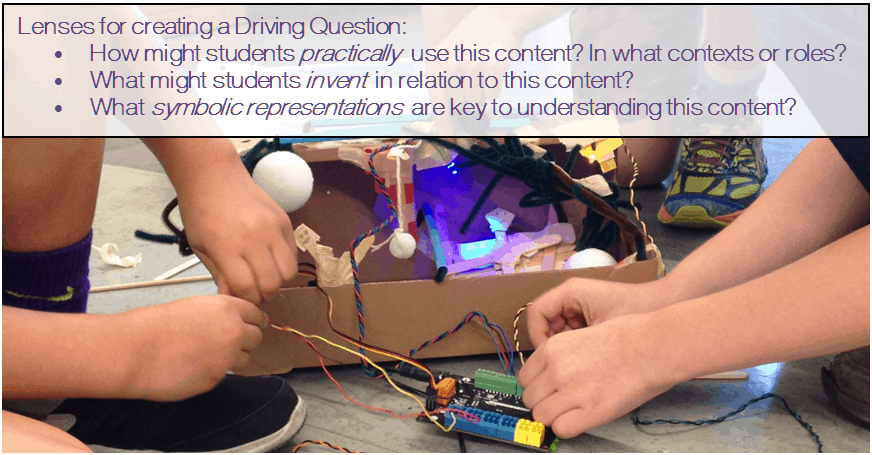
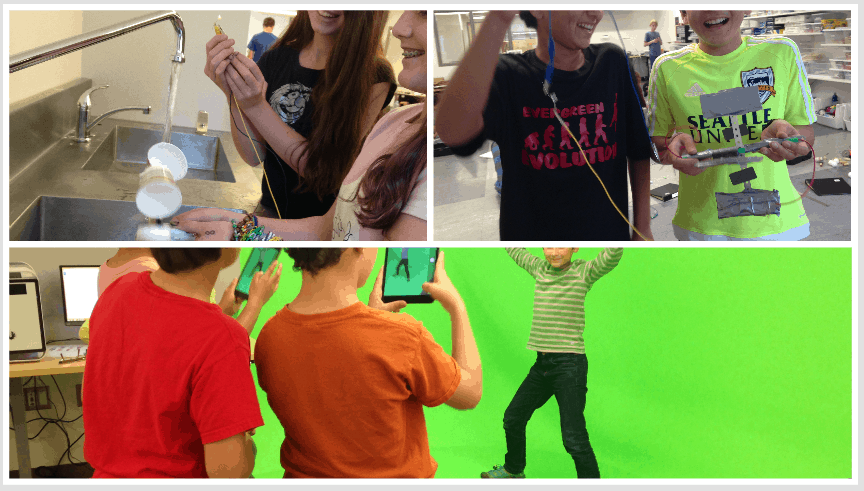
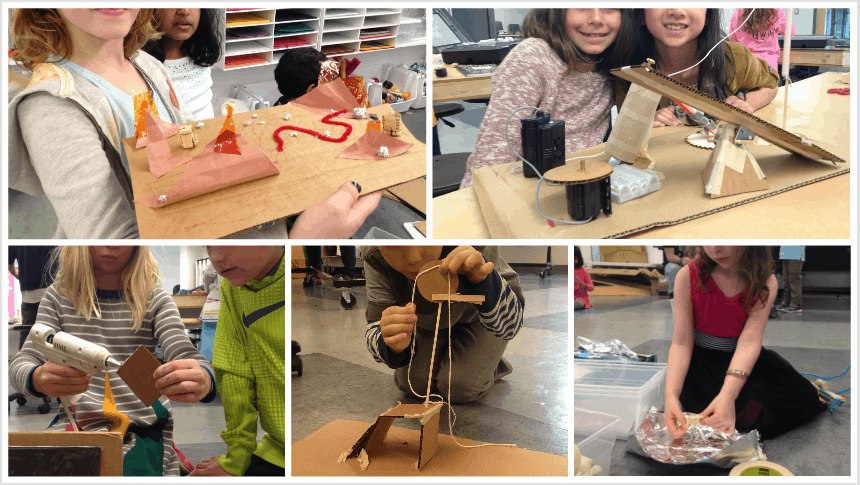
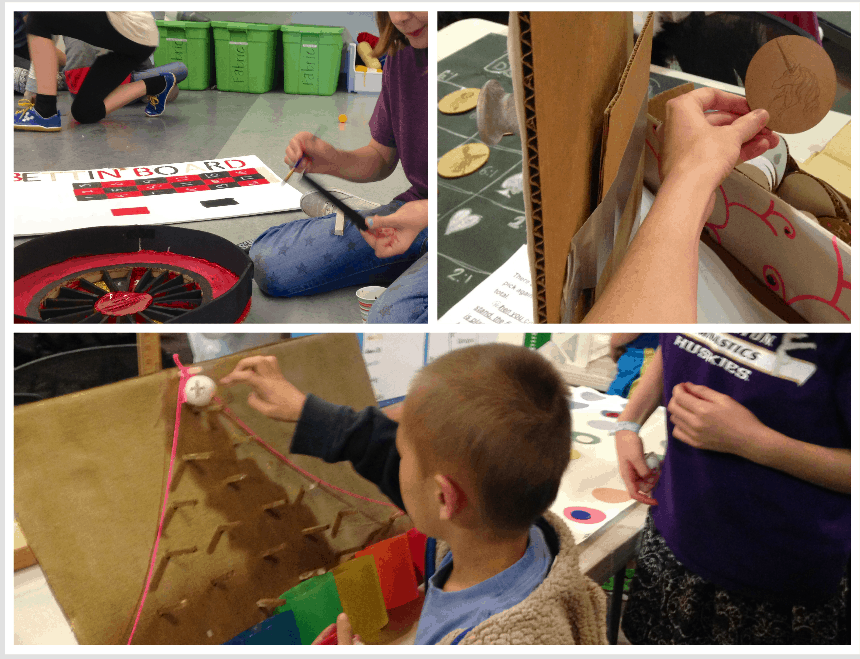
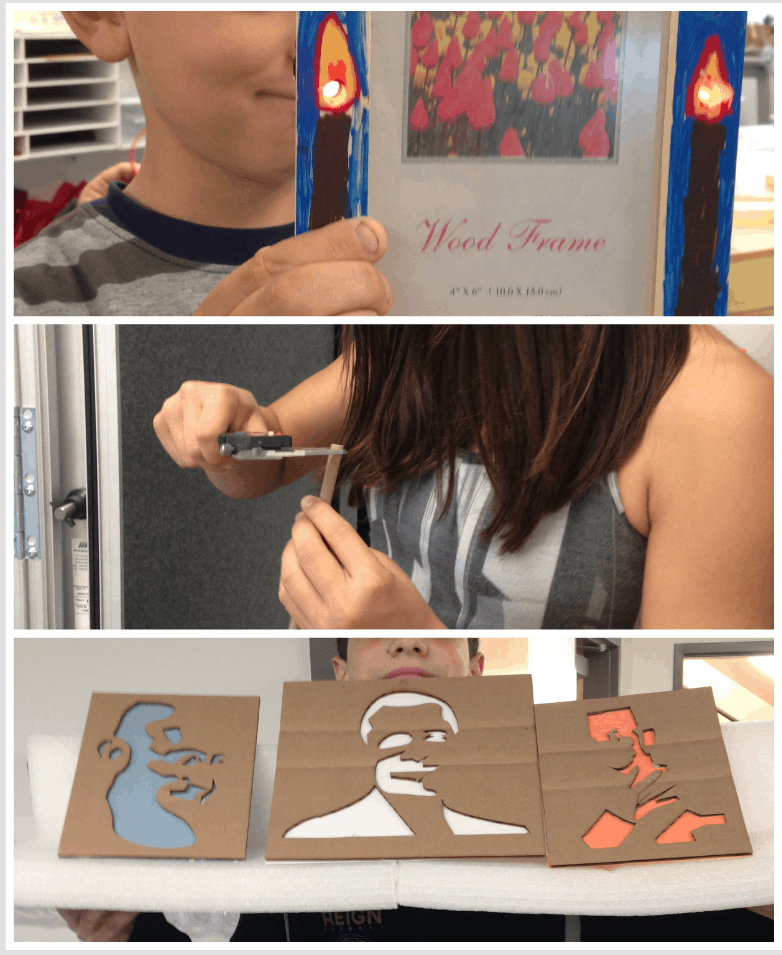

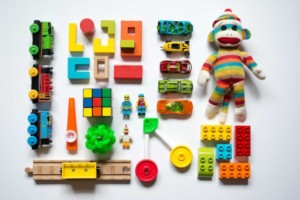
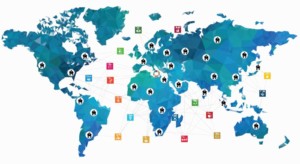

0 Comments
Leave a Comment
Your email address will not be published. All fields are required.